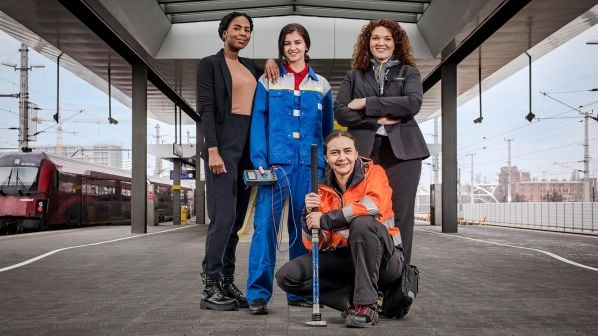FOR women working in the rail sector, the broader European supply industry is the benchmark. According to an International Union of Railways (UIC) survey from September 2022, 21% of the rail sector workforce in the EU-27 countries is comprised of women. Across the rest of Europe, it’s 22%.
Across the world, the Americas match this at 22%, whereas the figure falls to 16% in Africa and 14% in Asia.
We need to ask ourselves - what is the point of being the benchmark, when the figure is still so broadly unacceptable? The rail industry finds itself asking how it attracts the next generation of talent to remedy skills shortages. Yet this task is made so much more difficult when we are still struggling to attract the demographic that makes up half of the population.
As we are regularly reminded, in our efforts to rapidly reduce emissions and decarbonise our economy, despite having benchmarks and developments to be proud of, we are still a way off from where we need to be.
Relatively low female representation in science, technology, engineering and mathematics (Stem) subjects continues to be a lingering issue. European Commission research, published in 2021, found that in a typical academic career in science and engineering, the proportion of women and men among students and academic staff was still deeply unbalanced.
At bachelor’s or master’s degree level, women make up only 35% of all science and engineering students and academic staff. When assessing the gender divide of Grade A - the single highest level at which research is normally conducted within institutions or the corporate sector - that proportion drops dramatically to 19%.
Workplace culture is important. It is the lifeblood of organisations. Without developing an environment which fosters and facilitates growth, development and trust, there will be stagnation. A fundamental element of a good workplace culture, which organisations spend a great deal of time and money to develop, is based on creating support and confidence from within your own profession.
There are examples in my life, and the lives of many women I know, where we haven’t been made to feel comfortable in our profession or field. A relative of mine in Portugal who studied civil engineering found herself almost the only female student amongst her peers, who were overwhelmingly male. This has to change.
You would be surprised at how the concept of what we feel is acceptable or what we keep on doing creates a negative culture through stereotypes.
At the Unife General Assembly in Madrid in June one of our best speakers and a distinguished woman in rail, Ms Sabine Schnieder, global senior vice-president of talent management at Siemens Mobility, put it quite simply: “we need to teach kids to dream and introduce them early to what rail is about.”
Part of this involves specifically telling or showing young women what is possible through a career and life in rail, one of the many ways to build a new culture from the ground up.
Once those young women are in rail, we need to work to retain them. I’m proud to be part of an organisation that is working and partnering across the sector to build programmes to do this.
Alongside Unife’s Gender Equity Policy and work to deliver the Skill Training Alliance for the Future European Rail System (Staffer) blueprint, our immediate actions are focused on retaining and empowering women already in the rail industry.
In addition, we have launched Women in Rail, a social media campaign to encourage more women to pursue careers in the rail supply industry. The campaign aims to promote a gender-inclusive work environment and increase the representation of women in rail.
It is also very positive to see that we are not working alone to increase female representation.
To cite a few examples, the Women’s Network at Siemens is dedicated to fostering collaboration between women across the company so that they may learn from each other’s experience and build an environment which is open to providing support.
For the last few years, Knorr-Bremse has been supporting women at the beginning of their careers by offering apprenticeships in technical, electrical and other manufacturing roles. On top of this, initiatives like Girls’ Day aim to encourage students of all ages to follow careers in research.
Despite these efforts, our attention always returns to how we can attract women from other sectors, with their valuable skills and knowledge, to further develop the capabilities of the rail industry.
Unife has turned to building profiles of these jobs, by outlining what being a rail sector engineer looks like, and doing the same for roles as tech developer, a signaller, a cybersecurity professional, and others. If we can offer this vision to women currently working in similar roles in other industries, for the first time they will have a clear idea of what working in the rail industry will entail, hopefully encouraging them to pursue opportunities in this field.
For the old adage still rings true: you cannot become what you cannot see.
During the current European Year of Skills, it is up to us as a sector - and Unife as a representative of the rail supply industry - to use our strong relationship with the European institutions to create and implement a vision where rail is at the heart of European mobility and sustainability, but as an industry led and populated by talented women, whose skills and ingenuity can take rail to the next level.

